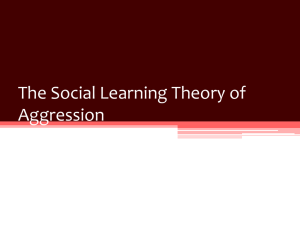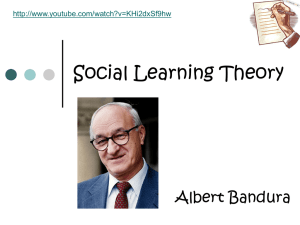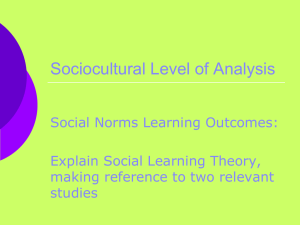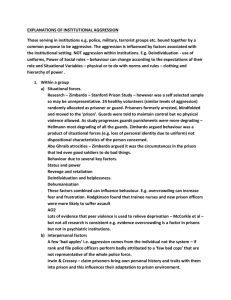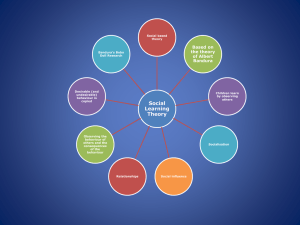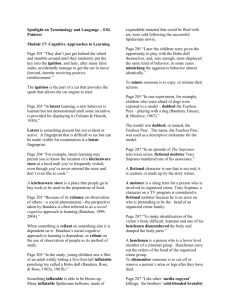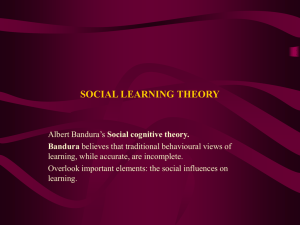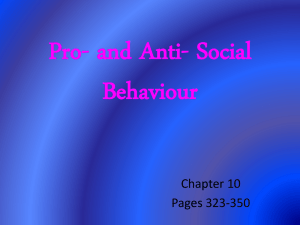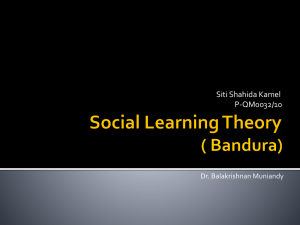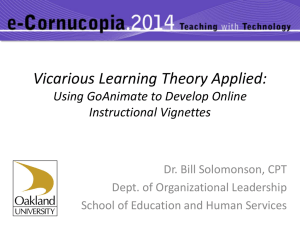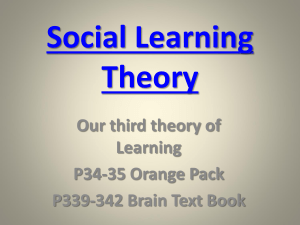SLT of aggression (pph)2012
advertisement
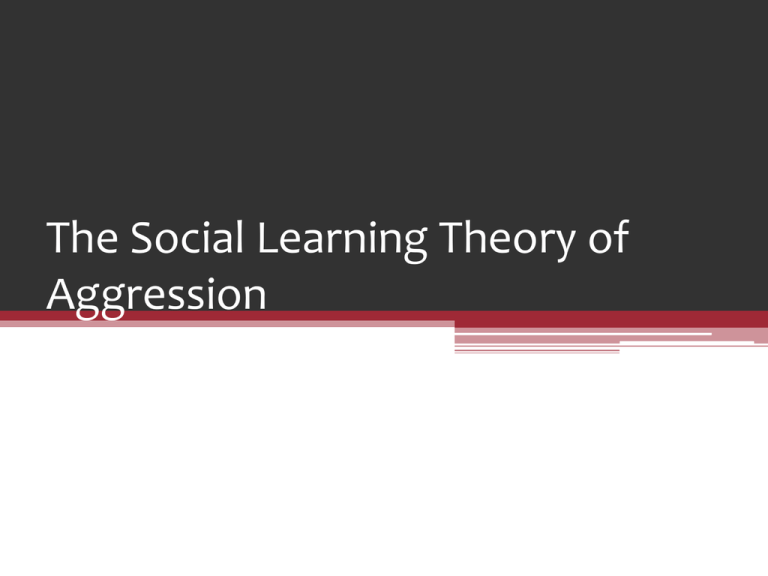
The Social Learning Theory of Aggression Aggression • Discuss ▫ What can cause children to behave aggressively? Social Learning Theory (SLT) • Social learning is learning through observation, imitation and modelling or another person or role model. • Created by Albert Bandura ▫ It is behaviourist, but does take into account thought processes ▫ Therefore it is also cognitive • Who do you look up to? Who is your role model? Have you ever observed a behaviour that you have then copied? Social Learning Theory • According the Bandura, there are 3 processes involved with Social Learning • Observation • Mental Representation • Maintenance through direct Experience. • Mnemonic? Example • Jane dyes her hair pink because her favourite celebrity has done so. ▫ First Jane observed what the celebrity had done ▫ Jane then made a mental representation of this information and the rewards it brought to her favourite celebrity ▫ Jane reproduced this behaviour and if she received praise for her new look, it would be maintained by direct experience Social Learning Theory • Using the three processes involved in social learning as outlined by Bandura, explain why a young girl may imitate her mother putting on makeup. Factors involved in SLT • The more similar the role model is to the observer, the more likely that the behaviour will be imitated ▫ Same gender ▫ Same age or older • Also, if the role model is seen in a positive light ▫ High status ▫ Likeable • For the case of the little girl on the previous page, which of these factors might have made her more likely to copy her mother’s behaviour? Vicarious Learning • Bandura stated that we are also influenced by observing the consequences of another person’s behaviour. • TASK ▫ Come up with an example for each of the following: Vicarious reinforcement Vicarious punishment Vicarious extinction Applying Social Learning Theory to Aggression • TASK ▫ Using the three aspects of SLT (OMM, factors involved in SLT and vicarious learning) explain how children might become aggressive. Think about which models children might learn this behaviour from. Applying Social Learning Theory to Aggression • Children observe and learn from role models ▫ At home (family) ▫ At school (other children) ▫ The media (TV, films, games) • They learn which behaviours are worth repeating • They have a mental representation of events they observe, and can anticipate reward and punishment. Applying Social Learning Theory to Aggression • Explain how operant conditioning can maintain an aggressive behaviour that has been learned through social learning. Give an example to demonstrate your point. • Evidence for SLT of aggression ▫ Bandura’s experiments on children ▫ Bobo doll experiment • Watch the video, and briefly describe what behaviour the children showed. Does this support or contradict the social learning theory of aggression? Applying Social Learning Theory to Aggression • A later experiment (Bandura and Walters 1963) showed children consequences of the adult’s behaviour ▫ The model was rewarded for their behaviour ▫ The model was punished for their behaviour ▫ The model received neither punishment or reward • TASK • Fill in the blanks with the following words “vicarious punishment”, “vicarious reinforcement”. Applying Social Learning Theory to Aggression • Using social learning theory, come up with an explanation of the riots that occurred throughout England during the summer. Make sure to use key terms (models, vicarious reinforcement, ARRM etc). Continue on the back of the paper if you need space. Homework • TASK (Exam Focus: Essay Structure pg. 5) ▫ Using the scaffolding above (as well as the “How to answer exam questions” hand-out), complete an answer to the following question. ▫ 1b: Describe the social learning theory of aggression (8)
